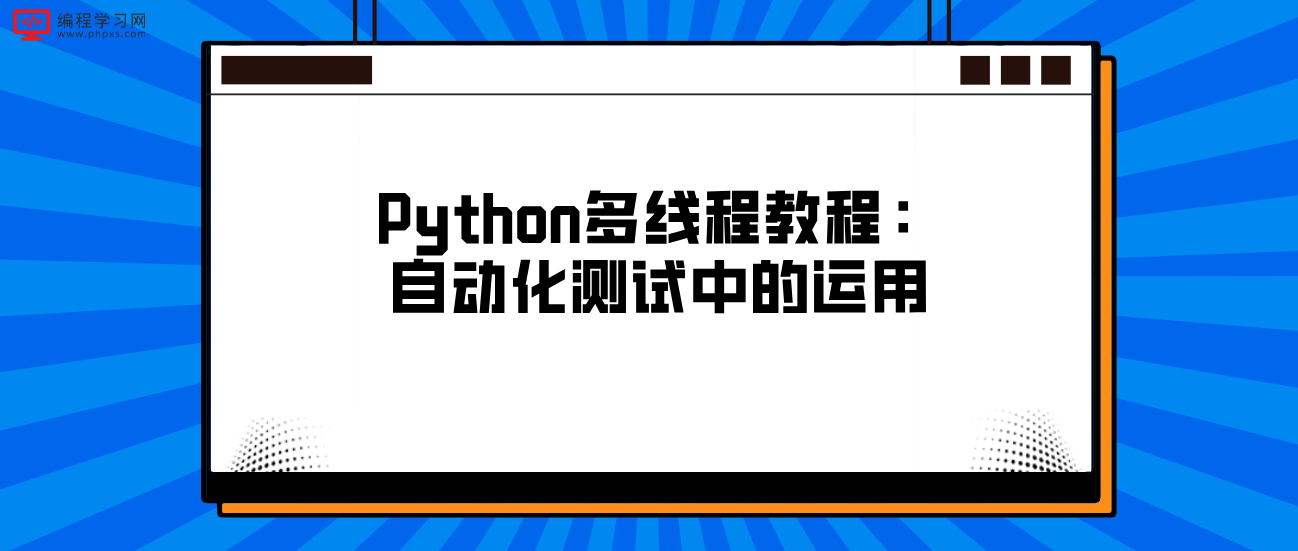
多线程是指在一个程序中同时运行多个线程,每个线程都是独立执行的。Python中的多线程通过threading模块实现,它提供了创建和管理线程的功能。
线程的创建与启动通过创建Thread对象来定义线程,指定线程要执行的函数或方法。
调用线程对象的start()方法来启动线程,使其开始执行。
线程的同步与互斥:
多线程环境中可能出现资源竞争的问题,需要通过同步和互斥机制来保证数据的正确性。
可以使用锁(Lock)、条件变量(Condition)、信号量(Semaphore)等工具实现线程间的同步和互斥。
线程的通信与数据共享
线程之间可以通过共享的全局变量来实现数据交换,但需要注意线程安全问题。
可以使用线程安全的数据结构(如Queue)或者使用锁来保护共享数据的访问。
线程的生命周期与管理:
线程的生命周期包括创建、就绪、运行和终止等阶段。
可以使用Thread对象的方法(如is_alive()、join()等)来管理线程的状态和控制线程的执行流程。
批量发送接口请求
import threading
import requests
def send_request(url):
# 发送接口请求的代码
response = requests.get(url)
print(f"Response from {url}: {response.text}")
def main():
urls = [
"http://api.example.com/endpoint1",
"http://api.example.com/endpoint2",
"http://api.example.com/endpoint3"
]
threads = []
for url in urls:
t = threading.Thread(target=send_request, args=(url,))
threads.append(t)
t.start()
for t in threads:
t.join()
print("All requests completed.")
if __name__ == "__main__":
main()
并发下载文件
import threading
import requests
def download_file(url, filename):
response = requests.get(url)
with open(filename, "wb") as file:
file.write(response.content)
print(f"Downloaded {filename}")
def main():
urls = [
("http://example.com/file1.pdf", "file1.pdf"),
("http://example.com/file2.pdf", "file2.pdf"),
("http://example.com/file3.pdf", "file3.pdf")
]
threads = []
for url, filename in urls:
t = threading.Thread(target=download_file, args=(url, filename))
threads.append(t)
t.start()
for t in threads:
t.join()
print("All files downloaded.")
if __name__ == "__main__":
main()
并发执行接口测试用例
import threading
from mytestframework import TestRunner
def run_test_case(test_case):
result = TestRunner.run(test_case)
print(f"Test case {test_case} result: {result}")
def main():
test_cases = [
"test_case1",
"test_case2",
"test_case3"
]
threads = []
for test_case in test_cases:
t = threading.Thread(target=run_test_case, args=(test_case,))
threads.append(t)
t.start()
for t in threads:
t.join()
print("All test cases executed.")
if __name__ == "__main__":
main()
多线程并发读取文件
import threading
def read_file(filename):
with open(filename, "r") as file:
content = file.read()
print(f"Content of {filename}: {content}")
def main():
filenames = [
"file1.txt",
"file2.txt",
"file3.txt"
]
threads = []
for filename in filenames:
t = threading.Thread(target=read_file, args=(filename,))
threads.append(t)
t.start()
for t in threads:
t.join()
print("All files read.")
if __name__ == "__main__":
main()
多线程并发写入数据库
import threading
import sqlite3
def insert_data(data):
connection = sqlite3.connect("database.db")
cursor = connection.cursor()
cursor.execute("INSERT INTO table_name (data) VALUES (?)", (data,))
connection.commit()
connection.close()
print(f"Data {data} inserted into database.")
def main():
data_list = [
"data1",
"data2",
"data3"
]
threads = []
for data in data_list:
t = threading.Thread(target=insert_data, args=(data,))
threads.append(t)
t.start()
for t in threads:
t.join()
print("All data inserted into database.")
if __name__ == "__main__":
main()
希望以上示例代码能够给你更多关于多线程在接口自动化工作中的使用场景的参考!
扫码二维码 获取免费视频学习资料

- 本文固定链接: http://www.phpxs.com/post/11809/
- 转载请注明:转载必须在正文中标注并保留原文链接
- 扫码: 扫上方二维码获取免费视频资料
查 看2022高级编程视频教程免费获取

